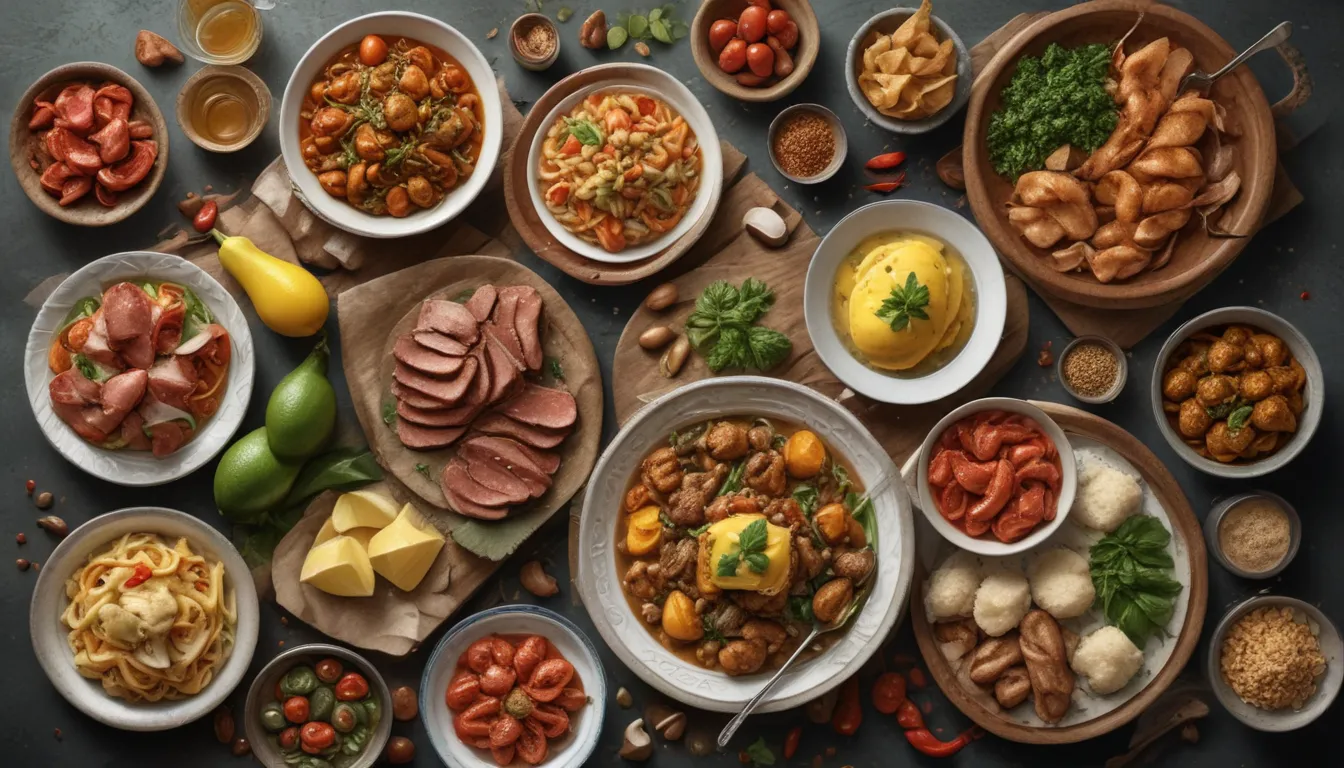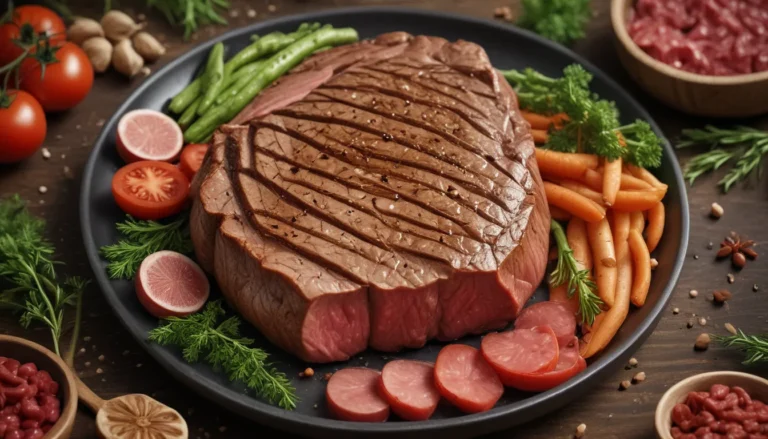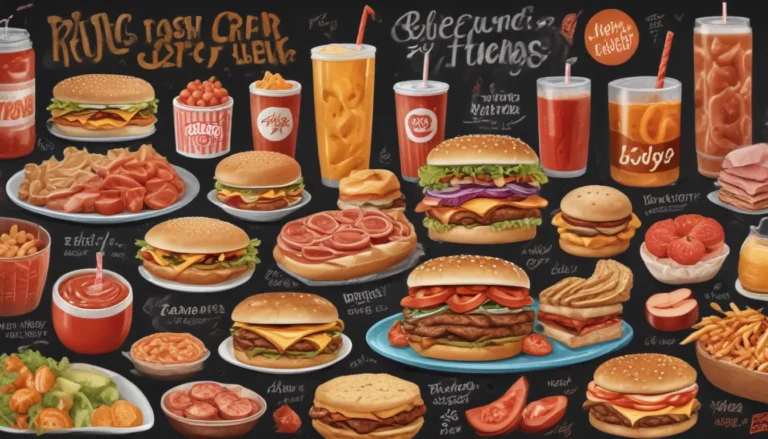The pictures in our articles might not always show exactly what the text is talking about. We use these images to make the article more interesting and eye-catching. They are there to add to the text, but not to replace it or show every detail.
If you've ever been curious about what makes Brazilian food so irresistibly delicious, get ready for a culinary journey like no other. Brazilian cuisine is a vibrant fusion of flavors, a celebration of the country's rich cultural heritage. From the bustling markets of São Paulo to the sizzling streets of Rio, each dish in Brazil tells a story of tradition, innovation, and the sheer joy of eating. With its diverse landscape serving as a backdrop, Brazilian food is a tapestry of tastes that will tantalize your taste buds and leave you craving for more. Let's dive into the world of Brazilian cuisine and uncover what makes it a must-try experience for anyone who appreciates vibrant, flavorful meals.
Unveiling Brazil’s Culinary Diversity
Brazil's culinary scene is as diverse as its landscape, blending Native American, African, and Portuguese influences to create a rich tapestry of flavors. From street food to fine dining, Brazilian cuisine offers an array of tastes and textures that reflect the country's multicultural heritage.
- Feijoada: Brazil's national dish, a hearty stew of black beans with pork or beef, is a perfect example of the fusion of cultures in Brazilian cuisine. Traditionally served with rice, collard greens, and orange slices, this dish has its roots in the colonial period.
- Açaí Bowls: Made from the Amazonian açaí berry, these bowls have gained international fame. In Brazil, they're often enjoyed as a refreshing snack or breakfast, blended with guaraná syrup and topped with granola and banana.
Indulging in Street Food Staples
Brazilian street food is a vibrant part of the country's food culture, offering delicious and affordable options for all.
- Coxinha: This popular snack consists of shredded chicken meat covered in dough, shaped into a drumstick, and then deep-fried. It's a favorite at parties and gatherings.
- Pão de Queijo: Also known as cheese bread, this gluten-free snack is made from cassava flour and Minas cheese. These bite-sized rolls are crispy on the outside and soft and chewy on the inside.
- Pastel: A type of fried pastry filled with various ingredients like cheese, meat, or hearts of palm. These are commonly found at street markets and are perfect for on-the-go eating.
Exploring the Sweet Side of Brazil
Brazilian desserts are just as diverse and flavorful as the main dishes, often featuring ingredients like coconut, condensed milk, and tropical fruits.
- Brigadeiros: Brazil's beloved chocolate truffles made with condensed milk, cocoa powder, and butter, then rolled in chocolate sprinkles. They're a staple at celebrations.
- Acarajé and Quindim: Acarajé, a savory snack, and its sweet counterpart, Quindim, are must-tries for anyone with a sweet tooth.
Regional Delicacies Across Brazil
Brazil's vast size means its cuisine varies greatly from region to region, each with its own unique dishes and ingredients.
- Bahia: Seafood is prominently featured in dishes like Moqueca, a fish stew flavored with coconut milk and palm oil, showcasing the African influence on Brazilian cuisine.
- The Amazon Region: Offers exotic fruits and fish, such as tucupi, a yellow sauce made from the wild manioc root, used in dishes like Pato no tucupi (duck in tucupi sauce).
- Paraná: Barreado is a traditional dish consisting of beef slow-cooked in a clay pot, sealed with manioc flour dough, showcasing the indigenous influence on the cuisine.
Celebrating Festivals through Brazilian Food
Festivals in Brazil are not just about music and dance; they're also an opportunity to indulge in special foods that are part of the celebration.
- Carnaval: Street vendors sell everything from acarajé to churrasco, allowing revelers to enjoy a variety of foods while celebrating.
- June Festivals (Festas Juninas): Celebrate saints like Saint John with foods like pamonha and canjica, highlighting the country's agricultural roots.
- Círio de Nazaré: One of the largest religious festivals in Brazil, features manicoba, a dish made from manioc leaves and various meats, symbolizing the blending of indigenous and European culinary traditions.
Embracing Coffee in Brazilian Culture
Coffee is not just a beverage in Brazil; it's a symbol of hospitality and social interaction.
- Brazilian Coffee: Known for its wide range of flavors, from chocolatey and nutty to fruity and sweet, Brazilian coffee is a global favorite.
- Cafézinho: A small cup of strong and sweet coffee offered throughout the day, reflecting the Brazilian warmth and welcoming spirit.
- Cafezinho and Pão de Queijo: Enjoying a cafezinho with a piece of cheese bread is a common afternoon snack, showcasing the simple pleasures of Brazilian food culture.
The Global Impact of Brazilian Cuisine
Brazilian cuisine has made its mark on the global food scene, introducing the world to its flavors and traditions.
- Rodízio Style Restaurants: Offering all-you-can-eat meat carved tableside, have become popular worldwide, bringing the Brazilian barbecue experience to an international audience.
- Açaí Trend: Açaí bowls and smoothies have become a global health trend, promoting Brazilian superfruits.
- Caipirinha: Brazil's national cocktail made with cachaça, sugar, and lime, has gained international fame, embodying the vibrant and festive spirit of Brazilian culture.
Savoring the Richness of Brazilian Cuisine
Brazilian cuisine reflects a tapestry of flavors, traditions, and cultural influences, making it one of the most vibrant and diverse in the world. From the hearty feijoada to the refreshing açaí bowls, each dish tells a story of historical fusion and regional diversity. Street food like pastéis and acarajé offer a glimpse into Brazil's bustling urban life, while traditional recipes such as moqueca and churrasco showcase the country's rich coastal and agricultural heritage. As we've journeyed through the flavors of Brazil, it's clear that food is more than sustenance here; it's a celebration of life. Whether you're a food enthusiast or a curious traveler, Brazilian cuisine offers an endless array of tastes to explore. So, next time you're pondering over what to try, remember, diving into Brazilian food is an adventure for the palate, promising delights with every bite.
Conclusion
Brazilian cuisine is a celebration of diversity, history, and joy, encapsulated in each flavorful dish. From street food staples to regional delicacies, festivals, and the global impact of Brazilian food, the culinary journey through Brazil is a feast for the senses. So, whether you're savoring a cup of cafézinho in Rio or indulging in a plate of feijoada in São Paulo, Brazilian cuisine promises a unique and memorable experience for all. Embark on this culinary adventure and immerse yourself in the vibrant flavors of Brazil.






